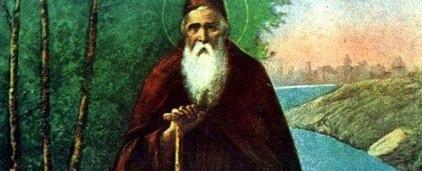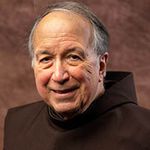Saint Conrad of Piacenza: Lay Penitent Hermit

On February 19, Franciscans celebrate the memory of Saint Conrad of Piacenza (c. 1290–1351), a lay penitent hermit known for his life of contemplative prayer.
A hunting incident changes Conrad's life
Conrad was born into the noble family of the Confalonieri in the town of Calendasco, Italy, a few miles from the commune of Piacenza. He married a noblewoman named Ephrosyne when they were quite young. One day he and his wife, with other companions, were out hunting; Conrad had his servants set fire to some brushwood to flush out game which had taken refuge there. Unfortunately, with heavy winds, the flames spread, destroying some villages, fields, and forests. Meanwhile, Conrad and his party had returned home. A peasant in the area was accused of being the one responsible and sentenced to death. As the man was being led to execution, Conrad came forward and admitted his guilt.

In the town of Calendasco, Piacenza, Italy, Conrad was born in the castle that sits to the left of the church in this photo.
A dramatic reversal of fortune reveals the hand of God
Due to his noble status, Conrad’s life was spared, but the damages he was forced to pay consumed most of his resources. He and his wife saw in this dramatic reversal of fortune the hand of God, and they agreed in 1315 to separate and devote themselves to God’s service: his wife became a Poor Clare in Calendasco, and Conrad joined a lay Franciscan hermit community in the area.

In this grotto Saint Conrad spent many years devoted to prayer.
The hermit gains a reputation for holiness
Over the years, Conrad gained a reputation for holiness, and the large number of visitors led him to embark on the life of a pilgrim. Around 1340, he settled in Sicily, where he became a solitary hermit in the valley of Noto. Here too his reputation spread and people flocked to his cell to be cured through his prayers. He died in 1351 and was buried in the cathedral in Noto, which became a popular shrine.

A bucolic scene in the Val di Noto, Sicily
The saint invoked as patron of hernia sufferers
Conrad was beatified in 1515 and canonized in Piacenza in 1645. He is invoked as a patron of hernia sufferers, due to several healings that were attributed to him.
-----
Main image: This modern image of Saint Conrad was created for the 700th anniversary of his birth in 1990.
Dominic Monti, OFM
Professor of Franciscan Research in the Franciscan Institute of St. Bonaventure University
Dominic V. Monti, OFM, is a Franciscan Friar of Holy Name Province (USA) and currently professor of Franciscan Research in the Franciscan Institute of St. Bonaventure University. He devoted the greater part of his ministry to teaching the History of Christianity, in particular the history of the Franciscan movement. He has contributed two volumes to the Works of St. Bonaventure series and is author of Francis & His Brothers, a popular history of the Friars Minor.

